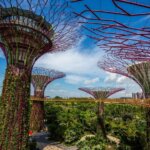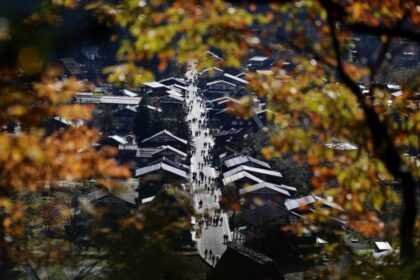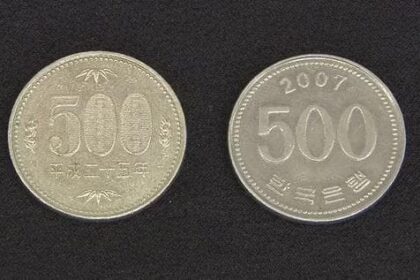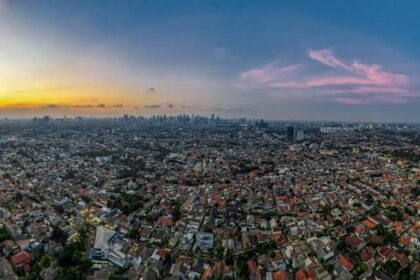Luxury Development in Komodo National Park: A Controversy Unfolds
Indonesia’s Komodo National Park, a UNESCO World Heritage Site renowned for its rare Komodo dragons and breathtaking landscapes, is at the center of a heated controversy. Plans to build hundreds of luxury villas and resort facilities on Padar Island—one of the park’s most iconic locations—have sparked fierce opposition from environmentalists, local communities, and international conservation bodies. The debate highlights the complex balance between economic development, environmental protection, and indigenous rights in one of Southeast Asia’s most treasured ecological zones.
- Luxury Development in Komodo National Park: A Controversy Unfolds
- What Is Being Proposed on Padar Island?
- Why Are Environmentalists and Locals Opposed?
- International Oversight and UNESCO’s Role
- Government Response and Policy Actions
- Broader Implications: Conservation, Tourism, and Indigenous Rights
- What Happens Next?
- In Summary
What Is Being Proposed on Padar Island?
The proposed development, led by PT Komodo Wildlife Ecotourism (KWE) and backed by government-linked interests, aims to transform over 274 hectares—about 20% of Padar Island—into a high-end tourism hub. The plan includes 619 buildings, with 448 luxury villas, a hilltop chateau, swimming pools, restaurants, gyms, and spa facilities. Supporters argue that the project will boost tourism and economic growth in the region, particularly in Labuan Bajo, the main gateway town to the park.
Padar Island, famous for its dramatic hilltop views, pink-sand beaches, and turquoise waters, has become a major draw for tourists. Although Komodo dragons do not inhabit Padar, the island is part of the larger Komodo National Park ecosystem, which supports around 3,000 wild Komodo dragons and a rich array of marine and terrestrial biodiversity.
Government and Developer Assurances
Indonesian authorities and the developer have emphasized that the project is still in the planning stages. No construction has begun, and all activities are subject to a rigorous Environmental Impact Assessment (EIA) and approval from UNESCO and the International Union for Conservation of Nature (IUCN). The Ministry of Forestry insists that only a small portion of the concession can be used for construction, with strict requirements for non-permanent, eco-friendly structures. Public consultations are ongoing, and the government has promised to review all permits and ensure that the development does not harm the park’s ecology or disrupt the habitat of the Komodo dragon.
Why Are Environmentalists and Locals Opposed?
Despite official assurances, the project has triggered widespread backlash. Environmentalists warn that large-scale construction—even on islands not directly inhabited by Komodo dragons—could have far-reaching consequences for the park’s fragile ecosystem. Padar Island’s unique landscape and panoramic views are at risk of being altered irreversibly, while increased tourism pressure could strain resources, disrupt wildlife, and damage sensitive marine habitats.
Critics point to the park’s history of balancing tourism with conservation. Komodo National Park, established in 1980 and recognized by UNESCO in 1991, was created to protect the endangered Komodo dragon and its habitat. Over the years, the park has become a global symbol of biodiversity and sustainable tourism. Many fear that turning a UNESCO site into a luxury resort betrays these conservation promises.
Local communities, particularly the indigenous Ata Modo people, have voiced strong opposition. Many residents boycotted public consultations, viewing them as mere formalities. They argue that the project benefits corporations rather than locals, who have historically been excluded from tourism profits and decision-making. An online petition calling for the cancellation of all business concessions in the park has gained traction, reflecting deep-seated concerns about environmental degradation and loss of access to ancestral lands.
Indigenous Rights and Historical Grievances
The controversy has reignited longstanding tensions over land rights and indigenous sovereignty. When Komodo National Park was established, many indigenous families were displaced and given only a small portion of land in return. The current development push is seen by some as a continuation of this marginalization, with little meaningful consultation or benefit for local communities.
As one indigenous leader explained, “We have lived in harmony with this land for generations. Now, decisions are being made without us, and our future is at stake.”
International Oversight and UNESCO’s Role
UNESCO and the IUCN have expressed serious concerns about the proposed development. During its 47th session in Paris in July 2025, the UNESCO World Heritage Committee requested that Indonesia ensure any tourism model in Komodo National Park is genuinely sustainable and aligns with international conservation standards. The committee also called for a detailed progress report and a thorough evaluation of the project’s impact on the park’s Outstanding Universal Value—a designation reserved for sites of exceptional natural or cultural importance.
UNESCO’s involvement is not new. In previous years, the organization raised alarms over similar projects on Rinca Island, another part of the park, urging a halt to development due to risks to the Komodo dragon’s habitat. The current Padar Island plan has reignited debate about UNESCO’s effectiveness in protecting the park and holding member states accountable.
Government Response and Policy Actions
In response to mounting criticism, the Indonesian government has taken steps to address some of the concerns. The Ministry of Forestry announced plans to tighten the quota system for tourists visiting Padar Island, aiming to reduce overcrowding and minimize environmental strain. Visitors will be required to queue, and new safety and conservation measures—such as fences and signboards—are being implemented to protect popular photo spots and sensitive areas.
Forestry Minister Raja Juli Antoni has stated that all tourism activities must not harm the environment or disrupt the Komodo dragon’s habitat. He emphasized that construction will not proceed without UNESCO’s review and public consultation. The government has also pledged to reassess construction permits and work with provincial and local authorities, as well as the Ministries of Environment and Tourism, to find a solution that balances development with environmental and community interests.
Denials and Disputed Claims
Some government officials have dismissed rumors about the scale of the project, insisting that the number of villas and the extent of development have been exaggerated. However, documents and media reports confirm that the current blueprint includes more than 600 structures, raising questions about transparency and public trust.
Broader Implications: Conservation, Tourism, and Indigenous Rights
The Komodo National Park controversy is emblematic of broader challenges facing conservation areas worldwide. As tourism booms and economic pressures mount, protected sites are increasingly at risk of being transformed into commercialized zones. The debate over Padar Island pits short-term economic gains against long-term environmental stewardship and cultural preservation.
Conservationists argue that introducing large-scale tourism infrastructure in protected areas undermines the very principles that led to their global recognition. The Komodo dragon, listed as endangered, relies on a delicate balance of habitat and prey. Even developments on nearby islands can disrupt ecological networks, increase pollution, and threaten the park’s biodiversity.
Tourism operators and experts within the region advocate for alternative models, such as eco-tourism, that prioritize conservation and community inclusion. They warn that damaging the park’s natural beauty and displacing local populations could ultimately reduce its appeal to responsible travelers and harm Indonesia’s reputation as a steward of world heritage.
Voices from the Community and Conservation Sector
Deputy Chairperson of the House of Representatives Commission VII, Rahayu Saraswati, stated, “Tourism development is important, but it should not compromise environmental sustainability or the rights of local communities.”
A conservationist with the Indonesian Forum for the Environment (WALHI) remarked, “Padar Island’s unique landscape and biodiversity are irreplaceable. Once lost, they cannot be restored. We urge the government to prioritize sustainable tourism and genuine community participation.”
What Happens Next?
The future of the luxury villa project on Padar Island remains uncertain. The Environmental Impact Assessment is under review by both Indonesian authorities and international bodies. Public consultations are ongoing, but many locals remain skeptical about whether their voices will be heard. The government faces mounting pressure to demonstrate transparency, uphold conservation commitments, and ensure that any development aligns with the park’s status as a UNESCO World Heritage Site.
For now, no construction has begun, and the world is watching closely. The outcome of this debate will have lasting effects—not only for Komodo National Park and its legendary dragons but also for the global conversation on sustainable tourism, indigenous rights, and the protection of irreplaceable natural heritage.
In Summary
- Plans to build hundreds of luxury villas on Padar Island in Komodo National Park have sparked fierce opposition from environmentalists, locals, and international conservation bodies.
- The development would cover about 20% of Padar Island and includes over 600 structures, raising concerns about environmental damage and loss of the park’s unique landscape.
- Indigenous communities and local residents feel excluded from decision-making and fear further marginalization and loss of access to ancestral lands.
- UNESCO and the IUCN are reviewing the project’s Environmental Impact Assessment, and no construction has begun pending their approval.
- The Indonesian government has promised stricter visitor quotas and conservation measures but faces criticism over transparency and community engagement.
- The controversy highlights the global challenge of balancing economic development, conservation, and indigenous rights in protected areas.
- The outcome will shape the future of Komodo National Park and set a precedent for sustainable tourism in Southeast Asia and beyond.












